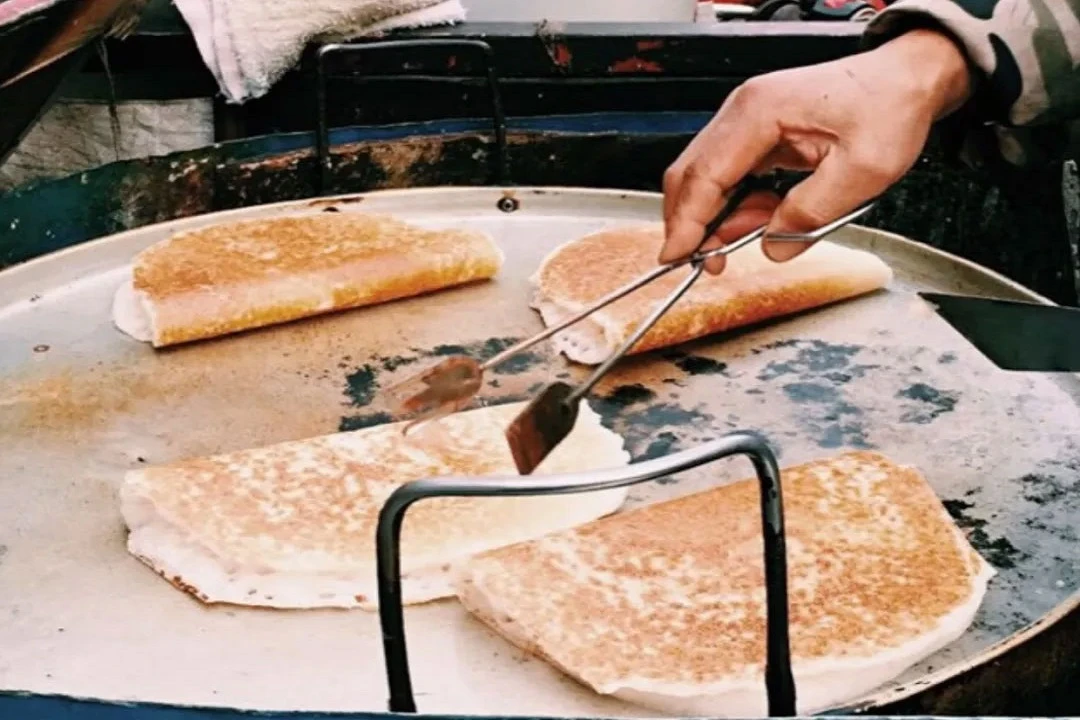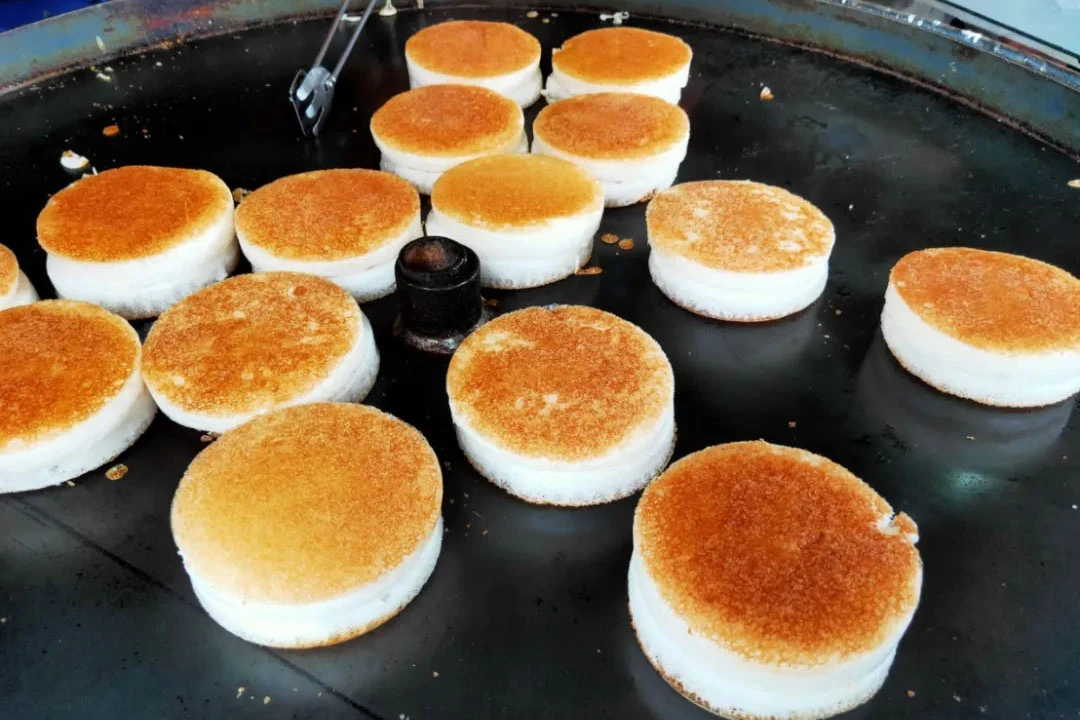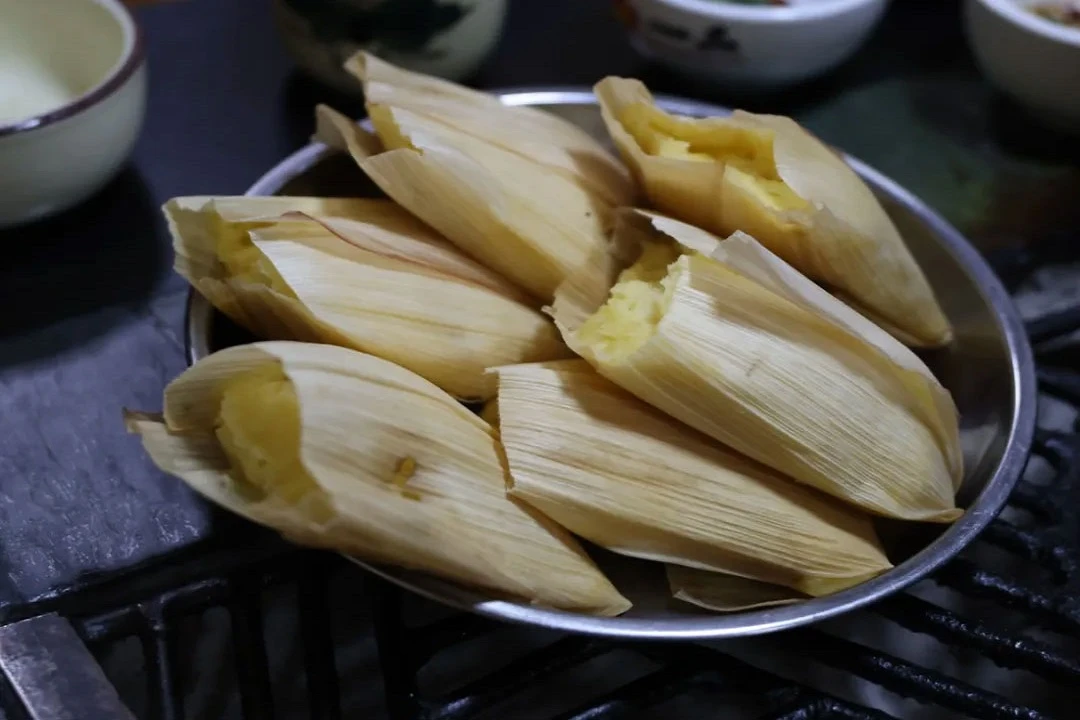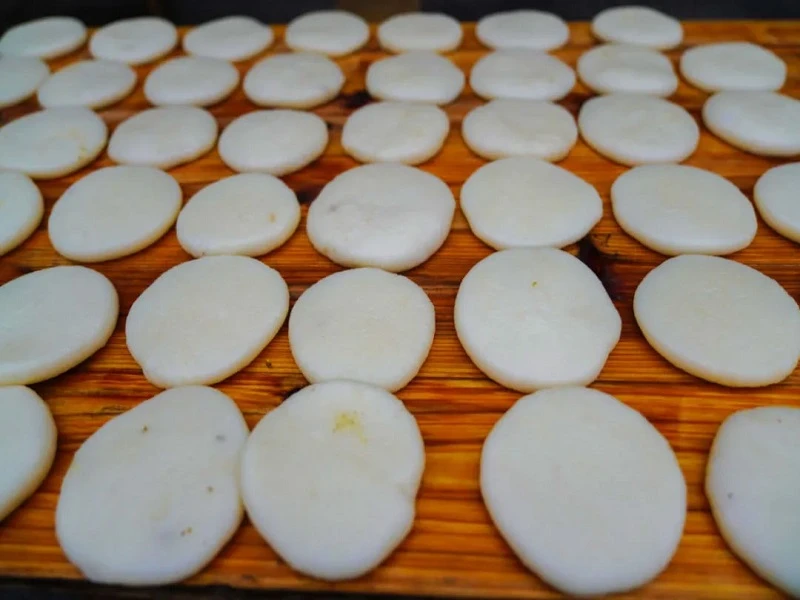Baba (粑粑), often overlooked in Northern Chinese cuisine, shines brightly as a beloved staple across Southern China, presenting a vast universe of culinary delights that rival the variety of Bing (饼), Mo (馍), and Huoshao (火烧). This versatile delicacy, ranging from plain to filled, sweet to savory, and steamed to fried, embodies the rich culinary traditions and diverse flavors of the region. Let's embark on a journey to uncover the cultural heritage and regional variations of Baba, celebrated in provinces like Guangdong, Guangxi, Fujian, and beyond.
Basic Baba: Essence of Simplicity
In its simplest form, Baba requires nothing more than grains and water, cooked in a manner that elevates simplicity to sublime flavors. In Xiangxi, glutinous rice Baba reigns supreme as a classic. During the lunar twelfth month, every household steams glutinous rice, pounding it into soft, sticky balls. Shaped into moon-like discs, these Baba are cooled in cold water for preservation until spring. Variations include sorghum Baba made with sticky sorghum, offering a different texture and taste experience.
Baba can be pan-fried, cooked in soup with sliced strips, but its most beloved preparation involves direct grilling over charcoal. The heated Baba puffs up like balls, developing a golden crispy crust. Tear open the outer layer, and stuff it with sugar, or pickled cabbage and chili oil. With each bite, the crispy exterior gives way to a chewy, rice-flavored interior.

Wuhan's rice Baba, known as Qishui Baba or Soda Baba, primarily uses rice as its main ingredient, without the need for pounding. Rice gruel mixed with a bit of fermenting agent is ladled onto a flat-bottomed pan, and spread into small round cakes. In the center of the pan, there's a depression filled with water that generates steam, helping the Baba's surface to solidify quickly – hence the name Soda. Once fried, one side of the Huangba Qishui Baba appears milky white while the other side turns golden brown, offering a crispy yet soft texture, with a subtle sweetness and hint of sourness.
Chongqing's Baba takes a different shape with the introduction of triangular molds, producing Sanjiao Baba. Both top and bottom layers are evenly heated, resulting in a golden-brown crispy surface and a soft core. Traditional sanjiao Baba lacks fillings, but modern versions may include sesame, shredded pork, or red bean paste for added flavors.
Sichuan's Pao Baba, fermented using rice gruel but not requiring frying, is poured into oval-shaped molds lined with gauze. Once steamed, it emerges soft and chewy, boasting a mildly sweet and slightly sour flavor that is appetizing.
Upgraded Baba: Adding Ingredients and Fillings
For those finding plain grain-based Baba a bit monotonous, there are myriad ways to enhance its flavors. Sichuan and Guizhou enjoy Huangba, resembling uniquely shaped Zongzi. Glutinous rice gruel mixed with brown sugar is evenly distributed and steamed inside special leaves – bamboo leaves, bamboo shoot leaves in Luzhou, or quality ginger leaves in Yibin. The fragrance of the leaves permeates the Huangba, rendering it sweet, aromatic, and soft. An upgraded version involves slicing Huangba, dipping it in egg before frying – a high-calorie treat with no regrets!
Danleng's specialty in Sichuan, Dongba, uses gruel made from indica rice, naturally fermented in winter's low temperatures. Mixed with rose petals, sesame, and brown sugar, it's wrapped in corn husks and steamed to a delicate, smooth finish. Adding lard transforms it into You Dongba, offering a richer mouthfeel.
Changsha's Tangyou Baba retains its sticky and sweet nature but goes through an additional frying process. Glutinous rice balls are fried to a golden hue, then coated with sugar, and skewered on bamboo sticks. Controlling the oil temperature is crucial for creating threads of caramel upon biting into it. However, traditional fried Baba tends to harden upon cooling. To remedy this, Huogongdian has innovated with Tangyou Baba, resembling tangyuan soaked in syrup.
Another renowned Baba from Changsha is Congyou Baba, similar in name but distinct in taste from tangyou Baba. Made from rice gruel and scallions, these large donut-shaped snacks are deep-fried to a crispy exterior and a moist interior, accentuated with the fragrance of scallions.
Another Type of Baba: Made with Flour
Anhui's Chizhou features a must-try breakfast item known as Xiaoba, made not with rice flour but with wheat flour, resembling pan-fried buns. Unlike other pan-fried buns, Xiaoba favors vegetarian fillings such as green beans, radishes, vermicelli, tofu, and pickled vegetables. Once cooked, Xiaoba's crispy outer layer gives way to a savory and slightly spicy filling – if only they weren't too hot to devour in one bite!
In Yunnan, anything resembling a cake can be called Baba, whether made from rice or wheat flour. Guandu Baba from Kunming appears as plain white round cakes but harbors a surprise inside – crushed sesame, peanuts, and walnuts, combined with sugar. During baking, the sweetness of nuts and sugar blends perfectly with the pure wheat fragrance of the outer layer, creating a harmonious taste.
Dali's Xizhou Baba, also made from wheat flour, is known as Posu Baba or Flaky Baba. The Fermented dough is flattened, smeared with lard, sprinkled with salt, scallions, and ham cubes. Rolled into a long strip and then divided into portions, it's flattened again in a special container heated from both top and bottom with charcoal, resulting in a crispy, flavorful Baba. Xizhou Baba lives up to its name, boasting layers upon layers of flakiness and an irresistible aroma. There are also sweet versions with added red sugar and lard residue.
These diverse varieties of Baba from Northern China offer a glimpse into the rich culinary traditions and regional flavors that define the country's cuisine beyond its more widely recognized dishes. Each Baba not only represents a unique combination of ingredients and cooking techniques but also tells a story of cultural heritage passed down through generations. As you explore the world of Baba, you embark on a journey through the tastes and textures that make China's culinary landscape so vibrant and diverse.
Regional Delights and Cultural Significance
Beyond their culinary appeal, various types of Baba also carry significant cultural and regional meanings, reflecting local traditions and lifestyles. In regions like Wuhu, Chaohu, and Lujiang in Anhui province, Songzao Baba is a must-have during the Small Year festival. Made from rice flour, these round cakes are filled with pre-cooked diced dried bean curd or pickled vegetables, forming flat, round shapes. They are either steamed directly or partially steamed and then fried in oil until golden brown. The outer skin of Songzao Baba has a unique softness characteristic of rice products, while the stuffing is rich and flavorful.
As you delve deeper into the world of Baba, each bite tells a story of craftsmanship and cultural pride, inviting you to savor the essence of Southern China's rich culinary tapestry.




Looks yummy 😋